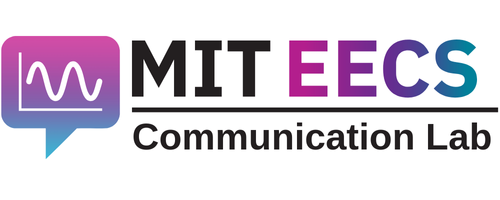Criteria for Success
A successful email…
- Has a concise subject line, in the format of “General Description: Desired Action”
- Has a greeting at the beginning and a closing at the end
- Sets an appropriate level of formality for the conversation
- Either:
- States a desired action that should be taken within a deadline, or
- Concisely relays information
- Is addressed only to the people who need to do the desired action
- Contains as little text as possible apart from the above
Identify your purpose
To identify your purpose it is important to understand the life of your fellow engineers and scientists. Most get emails regularly, with a new email coming about every 5 minutes. Because emails are the dominant method of communicating, it’s essential to write emails that accommodate recipients’ limited mental bandwidth, time and even the medium in which they often view email: the cell phone. This means that you need to do some up-front planning before hitting “send.” What is the purpose of this email? What do you want your recipient(s) to do?
Analyze your audience
Think clearly about your audience when planning, because this will influence:
- How much background information needs to be included?
- What is the appropriate tone of the email?
If you’re CC’ing people who are new to the conversation, it becomes even more important to provide background information to orient everyone to the conversation. This is again where a good subject line comes in (see “Write a clear subject line” below for more information).
Further, your audience will determine the tone of your email. If you’re writing to your PI, you should probably be more formal/professional than if you’re writing to your best friend. If in doubt, be more formal.
Skills
Write a clear subject line
With emails constantly flying into everyone’s inboxes, only a fraction of them actually get read. A good subject line is key to
- convince people they need to actually pay attention to an email, and
- ask that an action be taken by someone.
Here are some example subject lines:
| Worse | Better |
|---|---|
| Characterization of EG sample needed by Friday | EG Diamond: Characterization needed by Friday |
“Characterization of EG sample needed by Friday” is an email that summarizes an action that needs to happen. A better subject line would be: “EG Diamond: Characterization needed by Friday,” where a global tag has been included to improve future search ability. Then when you want to look up all actions on this diamond you can search EG Diamond and have a list of all emails that this diamond was involved in.
| Worse | Better |
|---|---|
| Lunch, today? | Lunch, today? [EOM] |
Sometimes everything we want to say could be included in the subject line, such as “Lunch, today? [EOM]”. (EOM stands for “End of Message.”) This is a fine email as it states everything quickly and efficiently, while the [EOM] tag lets the recipient know the email doesn’t have to be opened.
Avoid run-on subject lines
Subject Line: Have you seen this paper
Main Body: It’s about magnetic imaging
The run-on subject line is where the subject line runs into the main body of the email. This subject line is hard to read on a cell phone and is less likely read. As in the example above, this blurs the boundary between the subject line and the main body by using a sentence that stretches between the two. If in the future you wanted to remember what paper was referenced it would be much harder to find.
Use brackets to help categorize emails
Use brackets to categorize your message or denote it as urgent. Some example subject lines are:
- [Urgent] Need someone to turn off the laser
- [Please Reply] Meeting Next Week
State an action with a deadline
Sending an email with a clear action also improves the signal to noise of your email. When describing actions you can consider using a list and/or using bold to bring attention to what needs to be done. Be as specific as possible about what needs to be done to avoid the need for follow-up emails.
You should also be specific about who needs to perform the action. It is well known that when action is required of a collective, it is less likely to be done than when you assign it to someone. When many people get told simultaneously, there is this subtle feeling that someone “else” will do it.
(The metaphor of “signal-to-noise ratio” comes from Jean-luc Doumont’s book Trees, Maps, and Theorems.)
Write openings and closings with the appropriate level of formality
A greeting sets the right tone immediately, and avoids your emails sounding like demands. This may be unusual for some cultures, but for Americans especially a lack of a greeting can be off-putting.
| Openings | Closings |
|---|---|
Formal:
|
Formal:
|
Informal:
|
Informal:
|
Include your title under your name if you feel it lends credibility to your message.
Choose the right address type for different recipients
There are three types of recipients: TO, CC, and BCC.
| Appropriate recipients | |
|---|---|
| To: |
|
| CC (carbon copy): |
|
| BCC (blind carbon copy): |
|
Be brief. One email should state one action where possible.
- Use numbered lists and bullet points to avoid long paragraphs.
- If you must communicate multiple actions…
- Use a list, or
- Send multiple emails
Proofread before sending.
Double-check to make sure you have…
- the correct recipient list
- no missing words (prepositions often get lost) or other confusing errors
- all necessary attachments or links
Be especially careful to eliminate typos and errors when emailing someone new or sending a job application or other email where recipients are likely to judge your competence.
